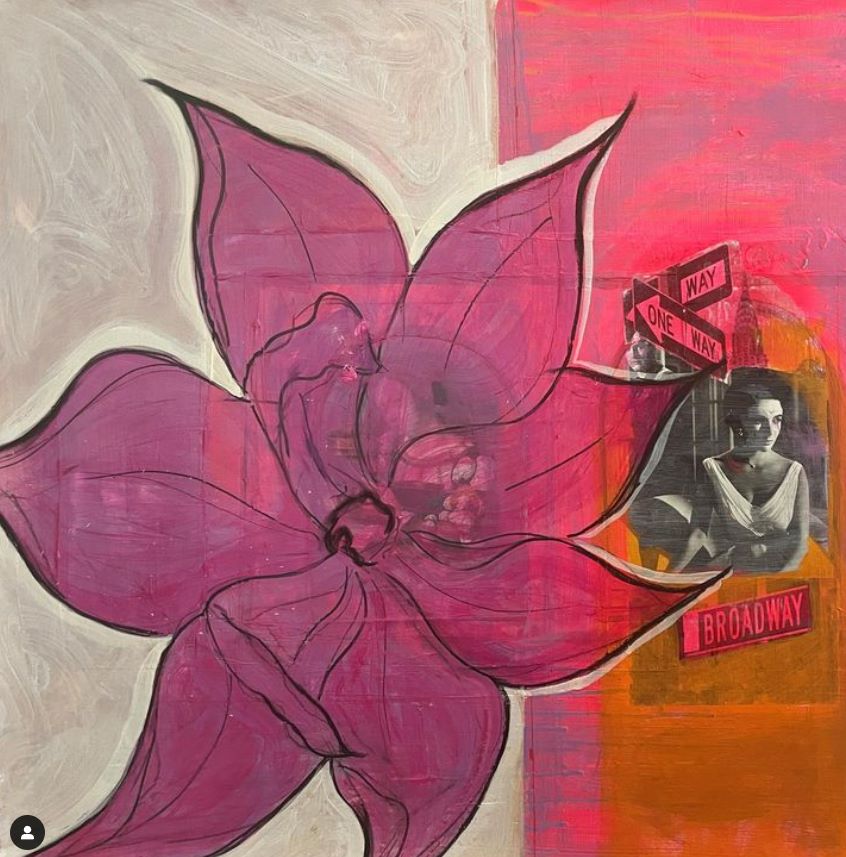
ARTIST’S STATEMENT
“I think that what a person normally goes to the cinema for is time: for time lost or spent or not yet had. He goes there for living experience; for cinema, like no other art, widens, enhances and concentrates a person’s experience—and not only enhances it but makes it longer, significantly longer.”Andrei Tarkovsky (filmmaker, 1932-1986)
I spent my childhood in West Asia watching American movies, on a loop, since access to films was rather limited. Both my parents and maternal grandmother were passionate about mainly American & some European cinema so I grew up with the same fascination about film, and later the art of filmmaking.
Martin Scorsese has often said that “casting is 85 to 90 percent of the picture for me.” I wholly concur – including during my still-picture making processes. My Art + Film paintings, which comprise a huge percentage of my work, start with casting the main character(s), and deal with deciphering the texture of the character (not necessarily the actor’s) personality.
As an artist, this exploration for characters help write the story in motion (film) and still (paintings) pictures which guide my choices for each composition, from media, the palette, the brushwork, choice of lens and camera, etc.
“I think an artist has always to be out of step with his time.” Orson Welles (actor-filmmaker, 1915-1985)
For three decades, cinema and theater have influenced Homa’s art in various media.
Daughter of a painter (Pooran Cheknian), Homa grew up with the scent of oil paint and turpentine in the kitchen where her mother would paint round the clock until her death in 2008.
In her conceptual mixed media paintings, Homa uses images from classic American and International movies juxtaposing them with art historical references. The dynamics as well as the tension between the ‘characters’ she ‘casts’ inform the artist’s choices for each composition, from the palette to the brushwork.
Similarly, Homa describes her choice to paint on archival paper – which is later mounted on canvas – as an organic, living force that energizes both the process of art-making as well the final work.
“Paper responds to everything that touches it… It has an elephantine memory.”
The seemingly narrative interactions between the figures in each painting dissolves as the viewer tries to make logical sense of the ‘story’ behind every composition. Hence, the conceptual nature of her art.
“Everything, the subject and the material of my work, is about energy & temperament … and, the physical and conceptual texture of each image that I create.”
All palettes in Homa’s paintings are created using the five primary colors – black, white, red, yellow and blue (with added sheen). Every layer in each work has a singular color configuration which is virtually irreproducible. As with her use of paper (invented in China), Homa’s choice to add a touch of saffron (originally from India) to her palette serve as reminders of her childhood – of being born on, and travelling along, the ancient Silk Road, in Persia (Iran).
“Ultimately, my work is about ‘moving pictures.’ Every composition is like a conceptual mood-board for a scene in a film that is yet to be written.”
Looking ahead, Homa is eager to work with various public and private collections to create site-specific multi-media works based on their collections, including: paintings, video and sculptural installations, film and social-media projects. Merging her many years of experience and research studying museums and their collecting heritage as a museologist, the space of the museum has been “like a second home” to the artist …